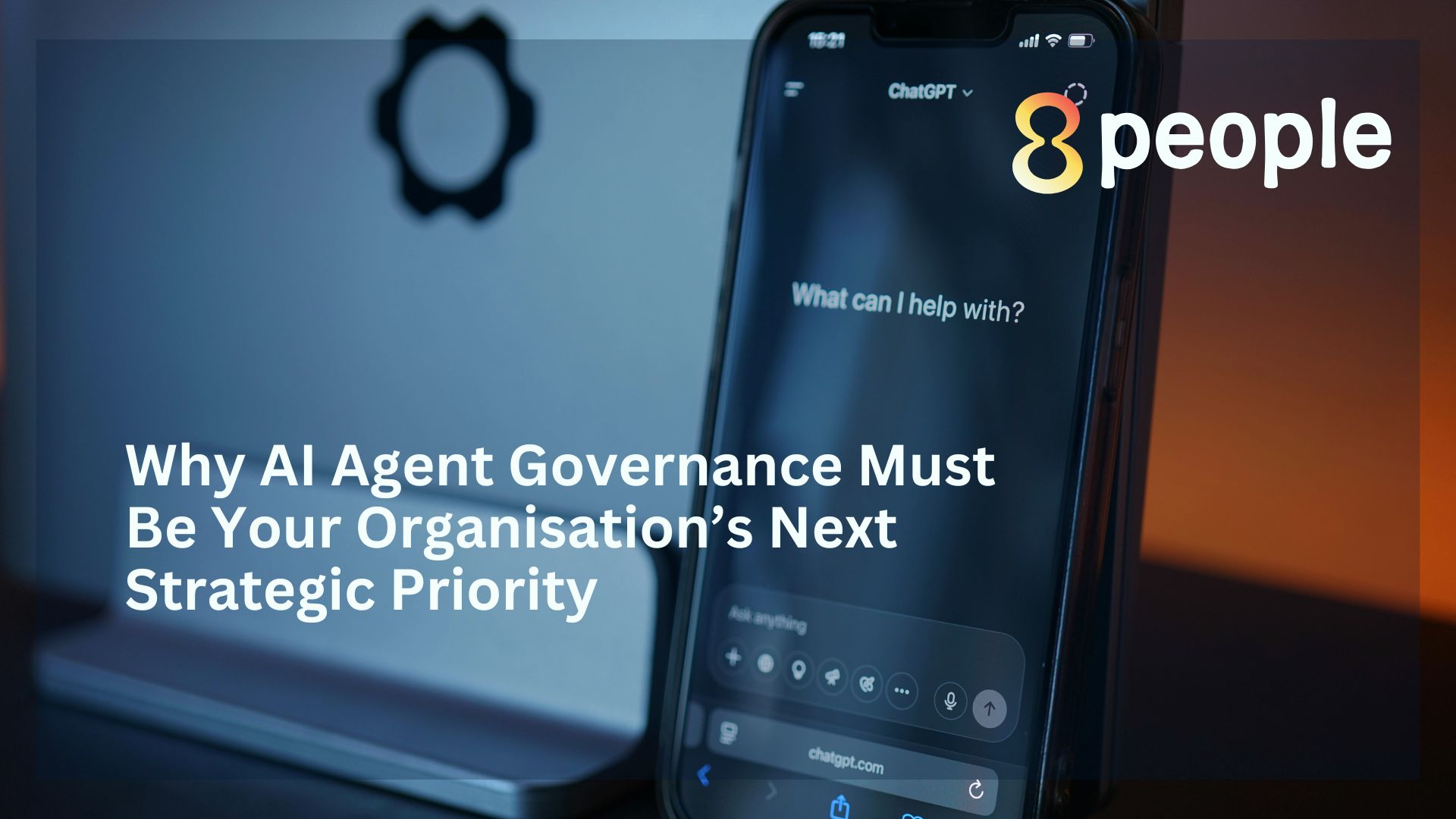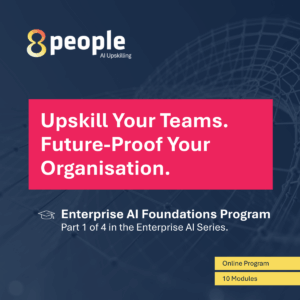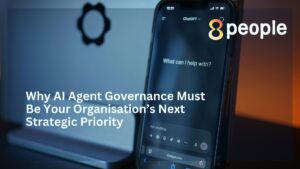Over the last couple of years in particular, we have become familiar with AI Agents, the AI tools that respond to our prompts or wait for our instructions. Now, there’s something far more powerful and fundamentally different and it’s the rise of autonomous AI agents.
Autonomous AI agents can independently pursue complex goals, make decisions on the fly, access multiple systems and execute actions without constant human oversight. These AI agents can deliver various outcomes while working toward objectives we have set for them. For example, these agents read from databases, deliver content in various type of files, send communications, run code and adapt their strategies based on results. In essence, these agents work like efficient and autonomous junior employees that try to achieve goals within boundaries we establish.
Autonomous agents represent extraordinary potential for organisations seeking to scale operations, reduce costs and accelerate decision-making. However, it also introduces governance challenges that are fundamentally different from those we may have implemented into our organisation so far.
As Peter Diamandis warns, “there will be two kinds of companies at the end of this decade: those that are fully utilising AI and those that are extinct.” Yet rushing to deploy autonomous agents without robust governance frameworks is equally perilous.
Navigating the Governance Gap
Traditional AI governance frameworks were designed for systems that operated within narrow, predictable boundaries but autonomous AI agents shatter these constraints!
These agents possess initiative and can continue working toward goals without additional prompting! These tools can be granted read access to databases, documents and web content, gathering information independently. Often, they have execution privileges to run code or trigger system actions and maintain working memory of prior steps and this expanded capability fundamentally changes the risk landscape.
When an AI agent can autonomously access sensitive data, execute financial transactions, communicate with customers or modify production systems, the potential consequences of misalignment, errors or security breaches multiply exponentially! The very characteristics that make agentic AI powerful which is autonomy, adaptability and complexity also makes agents more difficult to govern.
Key Governance Challenges
Organisations deploying autonomous AI agents face several governance challenges that demand strategic attention.
Accountability and oversight become significantly more complex when AI systems make decisions independently. In high-risk situations such as autonomous vehicles or algorithmic stock trading, an AI agent’s decision can have major consequences, yet human oversight is not always available in real time.
This creates a governance dilemma on how do leaders balance AI’s efficiency and autonomy with the need for accountability and control? Unlike rule-based systems with traceable logic, machine learning models make decisions based on complex patterns in data that even their developers can’t fully understand. When it’s difficult to understand what makes it difficult to audit AI-driven decisions, this becomes problematic in particular in regulated industries.
Imagine an AI system denying a loan application based on flawed data or a healthcare system recommending inappropriate treatment? The stakeholders must be able to understand the rationale behind such decisions.
Security vulnerabilities represent another critical concern. AI models and agents can be manipulated through various attacks and slight modifications to input data trick the AI into making incorrect decisions. Large language models [LLMs] that communicate in natural language can be “jailbroken” to generate harmful content. The risks of such jailbreaks are substantially higher for agents given they typically have greater access to external resources. Agentic systems often rely on APIs to integrate with external applications and data sources and poorly governed APIs can expose vulnerabilities that become targets for cyberattacks. Cybersecurity risks mostly include data leaks and unauthorised access that exposes sensitive information.
Bias amplification poses ongoing challenges as AI systems learn from historical data, but if that data contains biases, AI agents may amplify them. Agents may make undesirable decisions such as prioritising efficiency over fairness or privacy. When these biased decisions are then executed autonomously across systems, the impact can be widespread before humans even become aware of the problem.
Unpredictable autonomy emerges as agents gain the ability to set their own sub-goals and adapt strategies. The challenge lies in ensuring agents remain aligned with organisational values and intent even as they operate independently.
Compounding errors become a particular concern in agentic systems as small errors at the sub-task level can cascade into larger failures. In multi-agent scenarios where several AI agents interact, these compounding effects can be even more difficult to predict and contain.
Building Effective Governance Frameworks
Addressing these challenges requires organisations to embed comprehensive governance frameworks that extend beyond traditional AI governance approaches. These frameworks must manage risks whilst simultaneously building workforce capabilities to monitor, train and guide autonomous AI agents effectively.
Before deploying any autonomous agent, organisations must define precisely what systems the agent can access, what actions it can execute and what decisions require human approval. This involves implementing robust authentication mechanisms and access controls for APIs that agents use to integrate with external systems. Organisations should adopt a principle of least privilege, granting agents only the minimum access necessary to accomplish their designated tasks.
Implement comprehensive monitoring and evaluation systems that go beyond traditional model performance metrics. Risk evaluation frameworks should include negative behaviour detection to systematically identify harmful, inappropriate behaviours, boundary testing to probe the limits of an agent’s operational constraints and track how small errors might cascade into larger failures.
Create sandboxed testing environments where AI agents can make decisions without real-world consequences before being fully deployed.
Deploy agent-to-agent monitoring and governance agents as the complexity of agentic ecosystems grows. Because agents will often need to collaborate and negotiate with one another, monitoring these interactions and establishing conflict resolution rules helps ensure they can work together harmoniously. Some organisations are experimenting with “governance agents” designed specifically to monitor and evaluate other agents and prevent potential harm. Imagine a customer service agent that deals with difficult customers all day potentially developing problematic response patterns as a result of adapting across such interactions. A governance agent could identify this drift and either correct the behaviour autonomously or flag it for human review.
Establish human-in-the-loop oversight mechanisms for high-stakes decisions. Agents should be programmed to seek human approval for certain categories of actions, particularly those involving significant financial commitments, sensitive data access or decisions affecting individuals’ rights. Organisations should define clear escalation pathways and ensure human reviewers have the context and tools needed to make informed decisions quickly.
Implement emergency shutdown mechanisms that allow agents to be immediately deactivated, especially in high-risk environments. Organisations should establish containment procedures to ensure that malfunctioning AI cannot escalate issues before intervention occurs. These kill switches must be easily accessible to authorised personnel and thoroughly tested.
Build organisational capabilities through training and upskilling programs. Your workforce needs to understand how autonomous agents operate, what their capabilities and limitations are and how to effectively monitor and guide them.
Develop clear accountability structures that define who is responsible when agents make problematic decisions. This includes establishing governance committees, defining roles and responsibilities and creating transparent decision-making processes for agent deployment and oversight. Accountability frameworks should address technical accountability [meaning who monitors agent performance] and ethical accountability [who ensures agents align with organisational values].
The Path Forward
The governance of autonomous AI agents is not a one-time implementation but an ongoing process of learning, adaptation and refinement.
As agents become more sophisticated and take on increasingly complex responsibilities, governance frameworks must evolve in parallel.
Organisations should begin by piloting autonomous agents in lower-risk environments where the consequences of errors are manageable. This allows teams to develop governance capabilities and identify potential issues before scaling to mission-critical applications. Throughout this journey, organisations must maintain a culture of transparency where both successes and failures are openly discussed and lessons are systematically captured.
Importantly, governance should not be viewed as a constraint on innovation but as an enabler.
The era of autonomous AI agents is here.
Are you and your organisation leveraging these tools?
By Olivera Tomic, Founder of 8people




